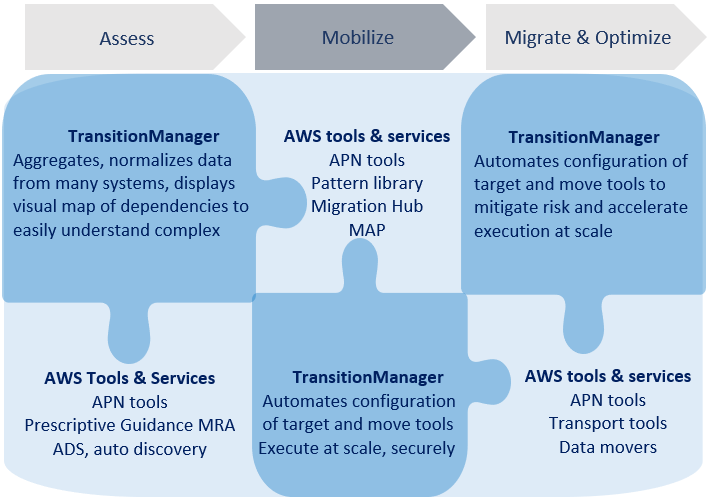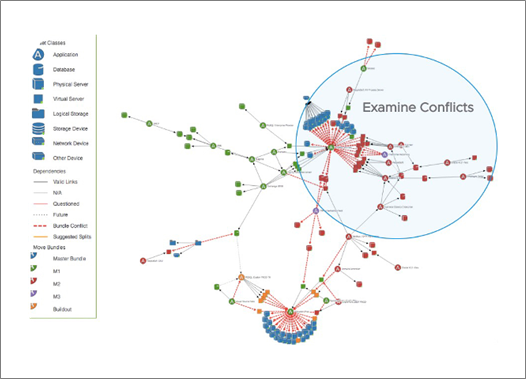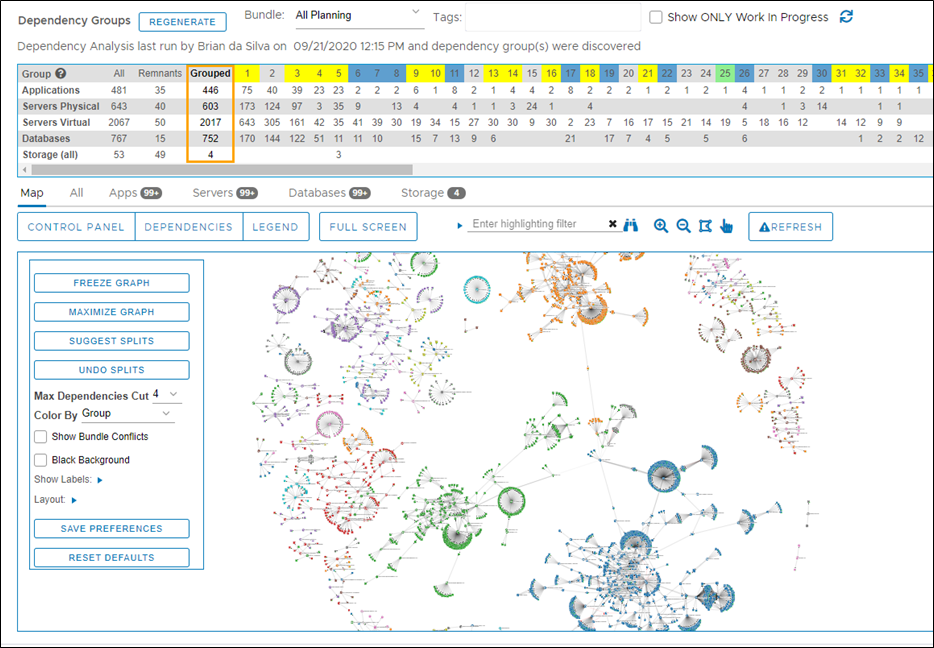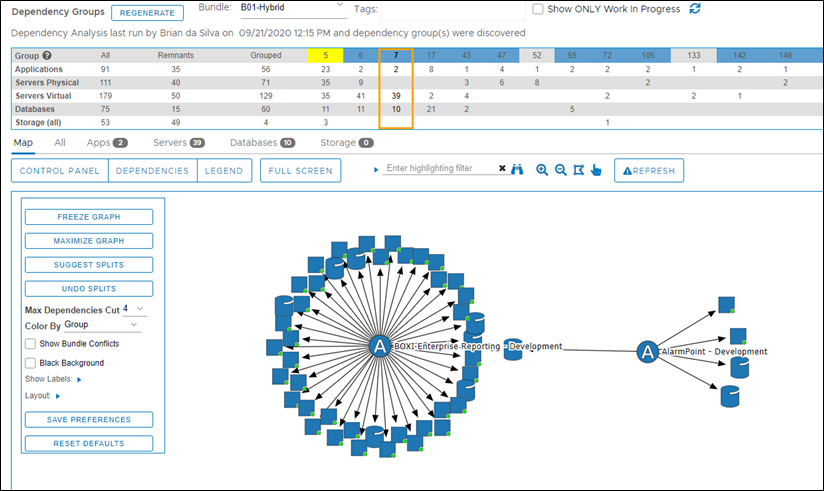AWS Partner Network (APN) Blog
Reducing Risk and Complexity When Migrating to AWS with TDS TransitionManager
By Sue Dunnell, Director of Product Marketing – TDS
By Taiji Saotome, Sr. Partner Solutions Architect – AWS
 |
| TDS |
 |
Many companies achieved early success with cloud adoption by migrating easy-to-move workloads, but they quickly ran into roadblocks and delays when undertaking more complex migrations.
Their efforts often hit a wall because the team lacked full knowledge of their assets and how they are connected across the company’s hybrid landscape.
Without this knowledge, it can be difficult for organizations to identify interdependencies across applications, infrastructure, and services, and to expose rogue assets that may make the migration a big risk to the organization.
This inability to unravel overall complexity, along with fear of causing outages or disruption of services, can prevent an organization from making informed decisions, so the project often stalls.
When undertaking migrations, IT organizations not only need full visibility into dependencies, they also need to understand each application’s criticality to business, service level agreements (SLAs), Recovery Point and Recovery Time Objectives (RPOs/RTOs), compliance, and security requirements.
Without this knowledge, organizations often hesitate when trying to orchestrate workflows, schedule migration waves, and execute migrations with confidence.
In this post, we’ll describe how TransitionManager provides the necessary insight to understand complex environments to help teams analyze, plan, understand, and reduce the risks associated with migrations. The post is aimed at migration practitioners and other stakeholders seeking faster, more efficient ways to plan, make decisions, and execute data center and cloud migrations.
TransitionManager and the experts at Transitional Data Services (TDS) can help streamline migration activities end-to-end. TransitionManager orchestrates the tools in a customer’s environment to make them work together and expedite the cloud migration journey.
How Does TDS Help?
TDS is an AWS Advanced Consulting Partner for cloud and data center migrations, and its experts have built TransitionManager to improve planning, orchestration, and execution of complex migrations.
TransitionManager delivers insight to understand how assets are interrelated across complex environments through visual, interactive maps. It also provides a flexible rules engine that adds flexibility to ensure decisions align with desired business outcomes.
The TDS team has been using TransitionManager for almost 20 years to orchestrate complex projects. In this time, they have seen it generate compelling results for both direct customers and partners, and the results surpass industry averages.
Figure 1 – TransitionManager supports AWS migrations end-to-end.
Businesses are accelerating cloud adoption to deliver on the promise of digital transformation (DX) more quickly. But successful DX requires that IT be able to rapidly adopt and deliver solutions with new technologies, from the desktop to the edge, while at the same time maintaining a resilient environment, responding swiftly to unplanned outages, and keeping legacy systems continue.
In other words, to support these seemingly different objectives, IT must transform itself first to deliver on DX. The key to this transformation is access to data that is actionable: current, and relevant.
Challenge: Maintaining Up-to-Date, Accurate IT Asset Inventory
IT teams have many purpose-built tools and are replete with data. Yet, when it comes to migrations most teams do not have access to the data they actually need. That’s because migrations are different from other IT projects. They span teams across IT as well as other business units, each with its tools that may not be designed to work together.
Successful migrations, however, require that they do work together—seamlessly—as shown in Figure 2.
TransitionManager integrates with tools across every phase of a migration so that data can flow from different systems, providing teams with access to the right data in the right format at the right time, when it is needed to make decisions. TDS believes all stakeholders across a project team should have consistent access to information that is current, actionable, and comprehensive.
Figure 2 – TransitionManager orchestrates migrations end-to-end.
TransitionManager aggregates, normalizes, and consolidates data from configuration management databases (CMDBs), data center infrastructure management (DCIM), home-grown databases, and file systems into an internal repository. Its rules engine optimizes the data ingestion process to capture critical fields and filter out unnecessary data from each target data source.
Upon import, TransitionManager analyzes data quality and performs remediation as needed, and then displays a dependency map of the entire landscape. This makes it easy for teams to understand how assets are related with a business-focused, app-centric perspective.
Figure 3 – Interactive map of relationships across applications and other assets.
Case Study: A Clear View of a Disparate Environment
One of TDS’s clients, a large global insurance company, had decentralized their IT group and aligned teams with each of the 12 business units.
Multiple CMDBs, DCIMs, home-grown databases, file systems, and other assessment, monitoring, and performance tools were distributed across the enterprise. This made it difficult to know which system had the most accurate data, and which data points were missing from each system.
Like many enterprise clients, users had access only to specific data sources, and no user had access to all systems. Duplicated data entries were difficult to identify because there was no consistency in naming conventions. Data sources were updated at different intervals, making it hard to know which data was most current and what was missing.
To address this challenge, TDS took file exports from each system and transformed data so only critical data points for managing a migration were consolidated into a central platform, TransitionManager.
As shown in Figure 3 above, TransitionManager’s Dependency Analyzer displayed an interactive map of all assets and their dependencies across all hosting sites. It also revealed nearly 1,000 remnants without any known dependencies, which could possibly expose the organization to needless risk and additional costs.
Business Focused, Application-Centric View Hybrid IT
TDS validated data and app dependencies with subject matter experts (SMEs) in under an hour, capturing better quality data than could be done using a typical questionnaire. They got results more quickly than through the industry standard practice of requiring SMEs to attend recurring meetings.
The customer estimated they had 1,000 applications, but using TransitionManager it was discovered there were almost 3,500. After seeing the accuracy and depth of information available in TransitionManager, the client eliminated nine of their 12 systems, consolidating the three remaining systems into TransitionManager. They gained significant savings in license fees, and saved time that had been spent trying to consolidate and normalize data manually.
Additionally, the planning and execution phases were completed 25% faster than expected. This was due to several factors, including quick access to information about each asset for better decision-making and the ability to visualize affinity groups and what-if planning.
Below, Figure 4 shows the galaxy view of an entire hybrid environment, while Figure 5 shows a closer view of one group of assets.
Figure 4 – Visually explore an entire IT landscape; zoom in to plan affinity groups and move events.
Right-clicking on any asset node in the dependency map displays an asset record with 96 custom fields for every asset class, so teams can track every data point relevant to their needs.
In addition, custom rules can be used to query, evaluate, and transform data collected from assessment, optimization, sizing, and other purpose-built tools, thereby extending the value of the tools the customer has already invested in.
Figure 5 – The interactive map provides one-click access to asset properties.
Gain Insight for Managing and Mapping Your Application Portfolio
Ideally, organizations should have a plan for every application. However, after migrating easy-to-move workloads teams are often unsure of what to move next. That’s when they begin the process of app rationalization, categorizing applications to identify which ones will deliver the most value to business and assigning dispositions.
Again, this process requires insight to understand both the business and technical requirements for each app, along with a way to capture, track, and evaluate the related data.
TransitionManager helps solve both of these problems. Teams can interrogate each application’s asset record with simple queries to identify which apps meet business-defined criteria, and they can apply labels to groups of apps through bulk assignments.
To leverage the investment that organizations have already made, data from purpose-built tools can be stored in asset records, such as performance metrics from AppDynamics, or output from tools that assess app suitability for modernization.
When determining which of the 7 Rs to apply, the rules engine can query each app and evaluate data points from multiple fields. It can also assign a disposition into the asset record and then display the results to show groups for each R category visually.
Teams can rapidly analyze many what-if scenarios, see the results, make groups larger or smaller, and try something else. This type of analysis typically takes months using spreadsheets, and by the time it’s done changes have usually been made to the IT environment.
The rules engine can leverage a company’s existing investment in assessment tools and combine their recommendations with business requirements to achieve the following:
- Assign recovery methods to asset records of apps that meet the business definition of business-criticality tiers.
- Determine total cost of ownership (TCO) for applications—instead of just servers—by interrogating app asset records, identifying dependent servers and the other apps the servers support, app usage, performance, and other relevant factors to calculate the business cost of each app.
- Automate creation of migration waves based on business criteria, such as timeframe, maximum number of assets per group, department, or other criteria, and visually explore the generated groups and identify potential conflicts.
Migrations Require Flexibility in Planning and Ongoing Insight
Business requirements are dynamic, and changes may require the reassessment of applications and reassignment of dispositions. Tracking continuous change is critical but can be difficult when teams manage their assets, schedules, and move events across spreadsheets, with a project management tool, and email communications.
TransitionManager maintains all information for a project in one environment, so teams can easily gain the insight they need to make changes, query assets, and apply bulk changes to groups of assets. The diagram below is an example of how teams can visualize the dependencies and task status in real-time.
Figure 6 – Task Manager controls the sequence of execution and provides real-time task monitoring.
The TransitionManager rules engine delivers the critical combination of flexibility and efficiency, making it easy to iterate through any change, no matter how often. Teams can rapidly identify assets meeting specific criteria, apply changes, group the assets, and then change it again.
There are no restrictions on the number of users, so all stakeholders have access to consistent view of data, which builds transparency and trust.
Below is an example of the Task Manager screen in a table format that illustrates the high-level view of all migration tasks.
Figure 7 – Task Manager dashboard controls sequence of execution and reduces downtime due to handoffs.
Up Next
Teams need insight throughout a migration project to eliminate conflict when planning migration waves, to identify potential bottlenecks in real-time, and to ensure each server meets the requirements for its target platform.
Check out the second installment of this article on the TDS website, where we talk about accelerating the planning and migration process to AWS through insight, orchestration, and automation.
If you’d like to learn more right now, view this demo to see how TDS and TransitionManager help organizations move to the cloud at scale, saving millions of dollars and countless hours of frustration in the process.
Conclusion
TransitionManager helps IT migration teams reduce risk and accelerate the most complex migrations. It does this by building a solid foundation of actionable data to give teams insight into asset relationships across hosting sites. This drives faster, business-aligned, decision-making and mitigates the risk of service disruption.
TransitionManager also automates and orchestrates the precise sequence of tasks to configure the target environment and move assets at scale, so teams can get to AWS cloud faster with less risk.
Check out the following resources to learn more about TDS and TransitionManager:
- How BMW Accelerated Their Cloud Adoption to Drive Innovation and Agility
- Drowning in Data
- Faster Cloud Migrations (video)
You can also reach out to TDS anytime at info@tdsi.com.
TDS – AWS Partner Spotlight
TDS is an AWS Partner that provides cloud migration services and a powerful platform, TransitionManager, to accelerate the migration process end-to-end.
Contact TDS | Partner Overview | AWS Marketplace
*Already worked with TDS? Rate the Partner
*To review an AWS Partner, you must be a customer that has worked with them directly on a project.







